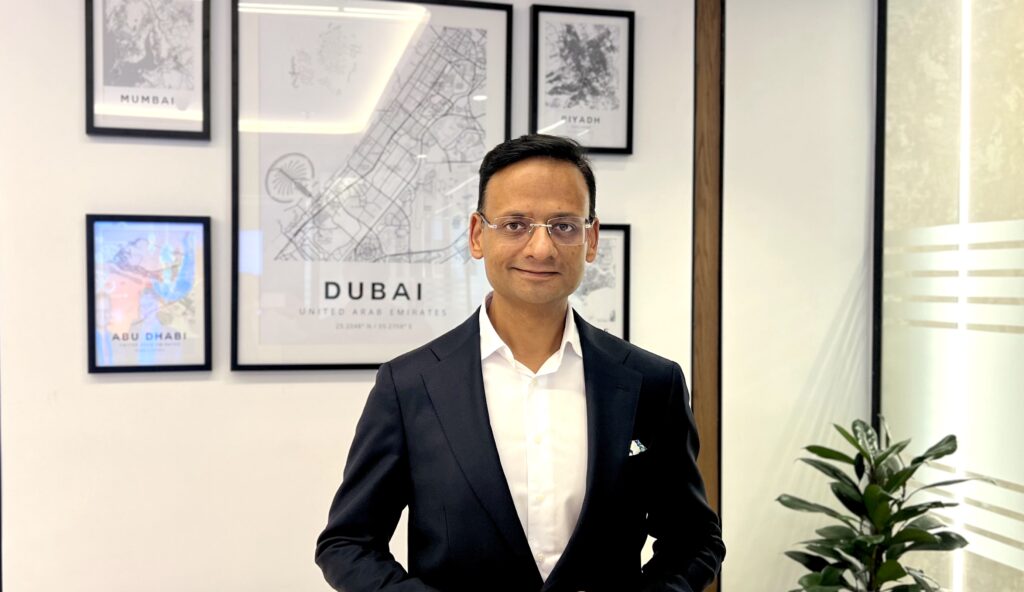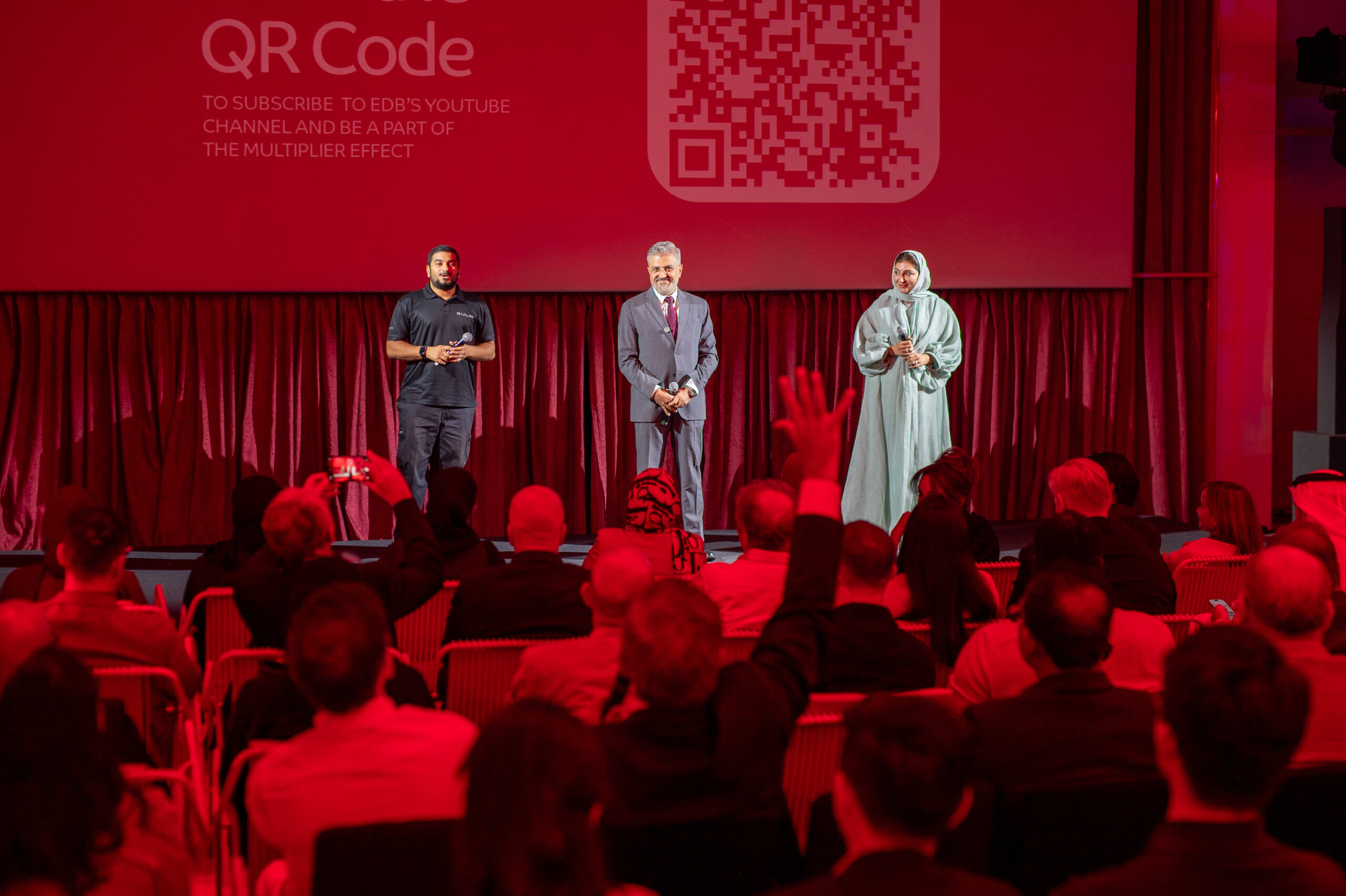Financial
Dhruva urges UAE firms to focus on data sovereignty in e-Invoicing transition

The 2026 mandate is an opportunity for businesses to align compliance with stronger data governance standards
With the UAE’s mandatory eInvoicing framework set to launch in 2026, Dhruva urges taxpayers to move beyond data residency considerations and focus on the critical issue of data sovereignty when selecting accredited service providers (ASPs). When adopting any cloud solution, it’s crucial to take the UAE National Cloud Security Policy into consideration, which provides a comprehensive checklist for cloud customers. This policy details necessary arrangements with cloud service providers, outlines contract requirements and sets cloud security requirements and enforcement measures.Dhruva is a leading tax advisory firm specializing in VAT, corporate tax, transfer pricing, and international taxation in the Middle East.
The eInvoicing rollout, based on the OpenPeppol five-corner model, will route all business-to-business (B2B) and business-to-government (B2G) invoices through ASPs that validate, exchange, and report tax-relevant data directly to the Federal Tax Authority (FTA). This shift makes the question of where data lives and who ultimately controls it – a matter of legal, operational, and financial consequence.

Commenting on the development, Nimish Goel, Partner and Head of GCC, Dhruva Consultants, said: “Businesses cannot afford to mix data residency with sovereignty. Hosting tax data within UAE data centres is necessary, but it does not, by itself, guarantee compliance or protection. True sovereignty means that encryption keys, administrative controls, and audit logs remain fully under UAE jurisdiction and cannot be accessed by foreign authorities. For taxpayers, this distinction is not technical—it is a fundamental risk-management decision.”
Dhruva highlights that this distinction is becoming urgent for three reasons. First, the UAE has enacted a robust Federal Data Protection Law (PDPL) and sector-specific rules that demand explicit safeguards on cross-border data flows. Second, with eInvoicing deadlines approaching, taxpayers must evaluate how each provider’s hosting model aligns with UAE data hosting requirements, sovereignty and National Cloud Security Policy laws. Finally, the operational reality is that migrating data and applications between clouds is not seamless. Factors such as data gravity, proprietary platforms, and audit trail integrity make switching providers slow, risky, and expensive.
“E-invoicing will not only redefine how businesses transact with government authorities, but also how they safeguard their most sensitive tax and financial records,” Goel added. “Companies need to recognise that the choice of ASP is a long-term strategic decision. The location of the cloud operator, the jurisdiction under which they fall, and the location of their control plane and encryption keys all impact compliance and data security far more than the physical location of the server rack.”
Dhruva advises taxpayers to approach ASP selection with a structured due-diligence process aligned with the policy for cloud customers in the UAE. This policy covers key domains such as governance, data location and sovereignty, interoperability, security incident and access management, data confidentiality, architecture and infrastructure companies should ensure that all storage, backups, and logs are held within UAE borders, that operational control and key management remain in UAE jurisdiction, and that providers comply with the UAE’s Peppol interoperability standard. Audit logs should be immutable, recovery sites must be located in the country, and exit strategies need to be documented and tested, with transparency on egress costs.
“Taxpayers cannot treat this as a simple IT procurement,” Goel emphasized. “It is a compliance and sovereignty choice that will determine their risk exposure for years to come. The time to ask these questions is now—before companies find themselves locked into providers that may not meet their future regulatory and operational needs.”
Financial
StashAway broadens private market access for UAE-based HNWIs amid strong growth

High-net-worth investors now account for over 75% of UAE deposits, and StashAway is responding with new semi-liquid portfolios that broaden access to private markets.
StashAway, a wealth management platform, is offering UAE-based high-net-worth individuals (HNWIs) greater opportunities to build long-term wealth through private markets1. The move follows a year of strong growth among its high-net-worth clients, with this segment driving over 75% of its growth in the UAE over the past 12 months.
The new semi-liquid offerings – private infrastructure and private equity portfolios – are managed by Hamilton Lane, a global private market specialist with over US $956 billion in assets under management. With these portfolios, investors will benefit from significantly lower minimums, lower fees, and monthly liquidity, providing flexibility than traditional funds typically lack.
StashAway’s momentum reflects a broader trend: Nearly 10,000 new millionaires are expected to arrive in the UAE by the end of 2025. As the country continues to attract global wealth, its wealth management landscape is becoming increasingly digital, with growing demand from affluent investors for alternative investment opportunities.
Increasing demand for private market investment opportunities
Globally, private markets are reshaping the investment landscape, with the number of publicly listed companies declining significantly over the past 25 years. Recent data revealed there are just 2,800 public companies, compared to 18,000 private businesses with annual revenues above US $100 million in the United States. This disparity underscores that opportunities to build wealth will increasingly be found in private markets, both in the US and worldwide.
With StashAway’s expanded private market offering, UAE-based HNWIs can tap into these growth opportunities. Clients can now access private infrastructure and private equity – an asset class with target net annual returns of 10-12%2.
Michele Ferrario, Co-founder and CEO, StashAway comments, “We’ve seen tremendous demand from high-net-worth investors who value the transparency and unbiased wealth advisory that we offer. Now, we’re bringing that same trusted experience to private markets, making it simple for investors to access high-quality, institutional-class opportunities.”
In line with StashAway’s existing private markets offering, both portfolios have significantly lower minimums and fees compared to private banks. While private banks often charge up to 3.5% in total management fees, StashAway clients pay a management fee as low as 0.5%. Unlike traditional private market funds with 10 to 15 year lock-ups, StashAway’s new portfolios allow investors to access their capital after a short initial lock-up period – offering greater flexibility as their financial goals evolve.
Raaed Sheibani, UAE Country Manager, StashAway adds, “A diversified portfolio with exposure to private markets is vital for high-net-worth investors seeking to build long-term wealth. But many clients tell us that high minimums and long lock-ups of traditional private market funds make it hard to get started or maintain the right allocation. We’re committed to making these opportunities more accessible. Our semi-liquid offering does exactly that – providing flexible access without tying investors into multi-year lock-ups.”
Both portfolios offer multi-manager & sector diversification through a single investment. The Private Infrastructure portfolio provides exposure across sectors such as energy, transport, digital networks, and utilities. The Private Equity portfolio is diversified across private equity life stages, geographies, and vintages.
Historically, both asset classes have outperformed public equities, while simultaneously experiencing lower volatility. As an example, a 10% private infrastructure allocation to a traditional 60/40 portfolio from 2014 to 2024 would have increased returns by 5.3% and reduced volatility by 10.6%. They are therefore essential to strengthening long-term portfolios.
These portfolios reflect StashAway’s broader commitment to simplifying access to the best investment solutions. They expand the platform’s suite of HNW offerings, which also includes Private Credit and unbiased wealth advisory for StashAway Reserve clients.
Financial
EDB’s New Documentary Puts the Human Face on the UAE’s Economic Transformation

Emirates Development Bank (EDB), the UAE’s leading national development bank driving economic diversification and industrial growth, has premiered its groundbreaking documentary, The Multiplier Effect, at an exclusive VIP screening at Cinema Akil. The film marks a new chapter in financial storytelling, highlighting the inspiring human stories behind the nation’s economic transformation.
Developed in partnership with the Ministry of Industry and Advanced Technology (MoIAT)’s ‘Make it in the Emirates’ initiative and the Ministry of Economy and Tourism’s ‘Startup Capital of the World’ national initiative, the documentary offers an intimate look at how strategic support creates a ripple effect of progress across society. It follows the inspiring stories of three entrepreneurs who, with EDB’s support, have overcome immense personal and professional challenges to build businesses in the UAE. By showcasing these real journeys of resilience and innovation, the film aims to inspire the next generation of entrepreneurs to take bold steps in building the UAE’s entrepreneurial nation.
Through a partnership with STARZPLAY, the documentary will be streamed to audiences across the region, with its public launch set for December 2nd, a tribute to the UAE’s visionary leadership and national spirit.
The premiere was attended by representatives from the Ministry of Industry and Advanced Technology, the Ministry of Economy and Tourism, and other government partners, as well as senior executives from STARZPLAY, alongside EDB partners from the public and private sectors, entrepreneurs from the industrial ecosystem, and leading media representatives.
H.E. Ahmed Mohamed Al Naqbi, Chief Executive Officer of Emirates Development Bank, said: “The Multiplier Effect highlights the people and ideas driving the UAE’s economic transformation. At EDB, our mission is straightforward: when we finance growth, the nation grows. Every business we support contributes to jobs, innovation, and long-term value for the country. This film shows that impact clearly. By backing ambitious founders and working closely with our government and partners, we are strengthening the foundations of a diversified and future-ready economy.”
As the UAE’s national development bank, EDB plays a critical role in advancing the country’s economic diversification agenda and supporting the National Strategy for Industry and Advanced Technology. The documentary highlights how EDB’s support and financing in priority sectors, including advanced technology, food security, and healthcare, is creating a powerful multiplier effect that drives economic growth, job creation, and self-sufficiency.
H.E. Abdulaziz Al-Nuaimi, Assistant Undersecretary for Entrepreneurship and the Economic Affairs Regulatory Sector, Ministry of Economy and Tourism, said: “The UAE’s vision for economic development is fundamentally people-centric. We measure success not only by outputs, but also by the human spirit and resilience — the founders who take risks, innovate, and shape new industries. This same vision lies at the core of the ‘Startup Capital of the World’ campaign. It is not just about numbers or rankings; it is primarily about fostering a culture where entrepreneurship becomes a natural and celebrated path for the UAE’s youth. When government, financial institutions, investors, and industry work seamlessly together, entrepreneurs gain the confidence to take bold steps. The stories featured in this film show exactly what that ecosystem makes possible, and how it inspires many more to contribute to a diversified, future-ready economy.”
The documentary features:
- Rashid Al Sulmi, the founder of SULMI, who risked his family’s legacy to build the UAE’s first electric motorbike from scratch in his garage. SULMI is a graduate of the Make it in the Emirates Accelerator, launched in partnership with MoIAT earlier this year at the Make it in the Emirates 2025 event.
- Bodour Al Tamimi,the founder of Pure Soil, a mother who turned her battle with autoimmune disease into a thriving organic food business, proving that world-class, healthy products can be made in the UAE. Pure Soil is also a graduate of the Make it in the Emirates Accelerator.
- Hiba Orfahli, a cancer survivor who, just weeks before her wedding, found hope in a pioneering, scarless surgical procedure at Oriana Hospital in Sharjah – a healthcare facility supported by EDB – enabling her to start a family.
Since launching its strategy in 2021, EDB has provided more than AED 22.6 billion in total financing, created over 38,000 jobs, and contributed over AED 10 billion to the UAE’s industrial GDP.
Beyond financing, EDB plays a pivotal role in building a thriving entrepreneurial ecosystem that empowers businesses to scale and succeed. Through initiatives like the AGRIX Accelerator and Make it in the Emirates Accelerator, EDB provides entrepreneurs with strategic mentorship, technical expertise, market access, and connections to a network of partners and resources. This holistic approach ensures that entrepreneurs and growing businesses receive not just finance, but the comprehensive support needed to transform ambitious ideas into globally competitive enterprises that drive the UAE’s industrial future.
Beyond documenting success, “The Multiplier Effect” serves as a powerful call to action for aspiring entrepreneurs across the UAE and beyond. Each story demonstrates that with the right support, determination, and ecosystem, ambitious ideas can transform into world-class businesses that create jobs, advance industries, and inspire others to pursue their entrepreneurial dreams. “The Multiplier Effect” will be available for public viewing on December 2nd. EDB encourages all media partners to embed the full documentary to share these inspiring stories with the world and fuel the entrepreneurial spirit that is building the UAE’s future.
Financial
PRIVATE EQUITY, VENTURE CAPITAL & ALTERNATIVES: DUBAI’S SHIFT IN ASSET ALLOCATION

Attributed to: Shivansh Rachit, Founder and Chairman at Hedge & Sachs Financial Consultations
Dubai is accelerating into a new phase of capital strategy, where private equity, venture capital, private credit, and alternative investments are reshaping how institutional and private wealth investors build long-term portfolios. Over the last two months, a surge of policy announcements, DIFC reports, and private markets activity has signalled a decisive shift: alternatives are no longer supplementary, they are becoming central to Dubai’s investment landscape.
Dubai’s Private Wealth Ecosystem Expands
A major inflection point came with the DIFC Future of Alternative Investments Report, which revealed that 52% of regional HNWIs increased their allocations to alternatives in 2025, seeking stronger yield, inflation-resilience, and diversification.
The report highlights that Dubai now sits at the crossroads of a US$20 trillion global alternative asset opportunity, with inflows from Europe, Asia, and Africa accelerating throughout October and November.
Dubai’s regulatory clarity, tax efficiency, and reputation as a global wealth hub continue to attract institutional investors and family offices who are shifting their asset base to the DIFC.
Private Equity: Deal Pipelines Strengthen Across Growth Sectors
Private equity activity has expanded in late 2025, with new regional and global funds establishing structures in the DIFC. The strongest flows are seen in sectors such as clean energy, logistics, healthcare, and AI-driven enterprises, all highlighted during Dubai’s October private markets briefings.
Fund managers are not only deploying capital in the UAE; they are anchoring their global PE operations in Dubai, citing a stable regulatory environment and seamless access to emerging markets across the Middle East and Africa.
Private Credit: The Fastest-Growing Alternative in the UAE
Private credit has surged as companies across the GCC seek non-bank financing. At the Dubai Fixed Income & Alternatives Conference in October 2025, investors highlighted private credit as one of the strongest performing alternative asset classes this year.
Higher yields, lower volatility, and asset-backed structures are pushing wealth managers to rebalance portfolios away from public markets. As global banks tighten lending conditions, Dubai’s private credit ecosystem is scaling rapidly, attracting global institutional capital.
Venture Capital: Maturing Despite Global Slowdowns
While global VC markets remain cautious, the UAE continues to grow its venture landscape. New VC licensing frameworks introduced in late 2025 have made the DIFC a preferred destination for global funds.
Founders from Europe and Asia are relocating to Dubai due to stronger capital availability, tax advantages, and access to regional growth markets. Fintech, AI, Web3, healthtech, and cloud-infrastructure startups are securing the majority of new funding rounds.
Infrastructure, Real Assets & The Rise of Long-Term Alternatives
Investors are increasing allocation to infrastructure funds, digital assets, renewable energy projects, and logistics hubs are all viewed as inflation-resistant and high-duration investments.
The UAE’s national energy transition strategy and regional megaprojects (transport, logistics, decarbonisation) make infrastructure and hard-asset investments highly attractive for pension funds, sovereign investors, and UHNW families.
Regulatory Strength: DIFC as a Global Alternatives Hub
What distinguishes Dubai’s alternative asset surge is not just investor appetite, it is the regulatory ecosystem accelerating it.
During October and November, the DIFC expanded its regulatory pathways for private funds, alternative asset vehicles, and cross-border structures. Global wealth platforms highlighted Dubai as one of the world’s most sophisticated jurisdictions for private markets, offering governance clarity, secure fund domiciliation, and international interoperability.
This regulatory sophistication is reinforcing investor confidence, drawing in new global GPs, private credit platforms, and venture firms.
A Structural Shift in Portfolio Strategy
Over the past few months, the message from Dubai’s financial ecosystem has been consistent and clear: the future of wealth in the UAE is alternative-led.
Traditional stocks and bonds remain relevant, however they are no longer the core of portfolio construction. Instead, private equity, private credit, venture capital, infrastructure, and real assets are becoming the foundational instruments of long-term investing.
As Dubai strengthens its regulatory architecture, expands ecosystem depth, and attracts global capital flows, the emirate is positioning itself as one of the world’s leading hubs for alternative assets where sophisticated capital strategies and future-focused portfolios converge.
-

 Tech News1 year ago
Tech News1 year agoDenodo Bolsters Executive Team by Hiring Christophe Culine as its Chief Revenue Officer
-

 VAR8 months ago
VAR8 months agoMicrosoft Launches New Surface Copilot+ PCs for Business
-

 Tech Interviews2 years ago
Tech Interviews2 years agoNavigating the Cybersecurity Landscape in Hybrid Work Environments
-

 Tech News5 months ago
Tech News5 months agoNothing Launches flagship Nothing Phone (3) and Headphone (1) in theme with the Iconic Museum of the Future in Dubai
-

 Tech News2 years ago
Tech News2 years agoBrighton College Abu Dhabi and Brighton College Al Ain Donate 954 IT Devices in Support of ‘Donate Your Own Device’ Campaign
-

 Editorial1 year ago
Editorial1 year agoCelebrating UAE National Day: A Legacy of Leadership and Technological Innovation
-

 VAR1 year ago
VAR1 year agoSamsung Galaxy Z Fold6 vs Google Pixel 9 Pro Fold: Clash Of The Folding Phenoms
-

 Cover Story9 months ago
Cover Story9 months agoUnifonic Leading the Future of AI-Driven Customer Engagement

























